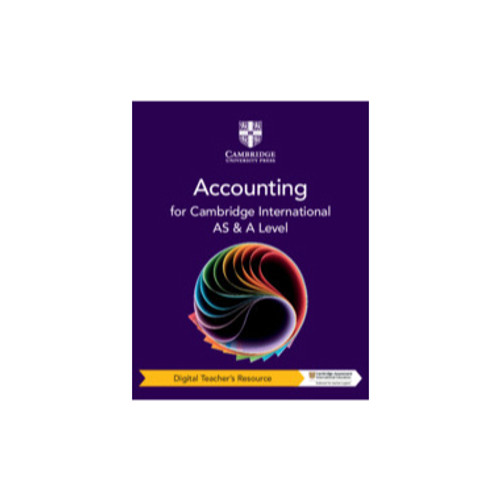Cambridge International AS & A Level Accounting Digital Teacher's Resource
Author/s: Deborah Malpas, Michael Seagrove, Julie Whatford
This series supports teachers and students of Cambridge International AS & A Level Accounting (9706) for examination from 2023.
Bring new ideas and inspiration into your Cambridge International AS & A Level Accounting classroom with this digital teacher’s resource.
Our first edition for AS & A Level Accounting, this resource is filled with step-by-step lesson plans, differentiation and language advice, as well as downloadable materials, such as PowerPoint presentations and worksheets to save you valuable lesson planning time.
Features:
-
A learning objectives box at the start of every lesson contains learning intentions and success criteria to ensure your lessons remain focussed
-
Step-by-step lesson ideas, including group activities, individual tasks and differentiation advice guide your teaching and bring new ideas into your lessons
-
Language support for English as a second language learners in every chapter ensures that language level isn’t a blocker to learning
-
Downloadable materials, such as PowerPoint presentations and topic worksheets, save lesson-planning time and can be used offline
-
Common misconceptions help address student misunderstandings and support every learner
-
Your digital teacher’s resource gives you access to everything you need - choose from editable Word files or PDFs to make lesson planning simple
-
Access all your Cambridge resources anytime, anywhere and create your own collection in ‘My Resources’
Contents:
Introduction
About the authors
How to use this series
How to use this Teacher's Resource
Lesson plan template and exemplar
About the syllabus
About the examination
Approaches to teaching and learning
Teaching notes, supporting materials and answers
Part I The accounting system
Chapter 1: Double-entry bookkeeping: Cash transactions
Chapter 2: Double-entry bookkeeping: Credit transactions
Chapter 3: The books of prime entry
Chapter 4: Balancing accounts
Chapter 5: The classification of accounts and division of the ledger
Chapter 6: The trial balance
Part II Financial accounting
Chapter 7: Statements of profit or loss for sole traders
Chapter 8: Statements of financial position for sole traders
Chapter 9: Accounting concepts
Chapter 10: Accruals and prepayments (the matching concept)
Chapter 11: Accounting for the depreciation of non-current assets
Chapter 12: Irrecoverable debts
Chapter 13: Bank reconciliation statements
Chapter 14: Control accounts
Chapter 15: The correction of errors
Chapter 16: Introduction to incomplete records
Chapter 17: Incomplete records - further considerations
Chapter 18: Partnership accounts
Chapter 19: Partnership changes
Chapter 20: Manufacturing businesses
Chapter 21: An introduction to limited company accounts
Chapter 22: Limited companies – Further considerations
Chapter 23: Non-profit making organisations (clubs and societies)
Chapter 24: Statements of cash flows
Chapter 25: Auditing and stewardship
Chapter 26: International accounting standards
Chapter 27: Computerised accounting systems
Chapter 28: Business acquisition and merger
Chapter 29: Ethical considerations
Chapter 30: Accounting information for stakeholders
Chapter 31: Analysis and communication of accounting information
Part III: Cost and management accounting
Chapter 32: Costing of materials and labour
Chapter 33: Absorption costing
Chapter 34: Unit, job and batch costing
Chapter 35: Marginal costing
Chapter 36: Activity-based costing
Chapter 37: Budgeting and budgetary control
Chapter 38: Standard costing
Chapter 39: Investment appraisal.






